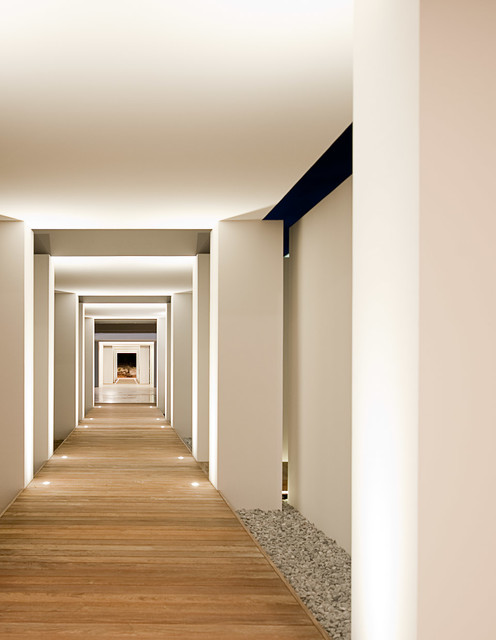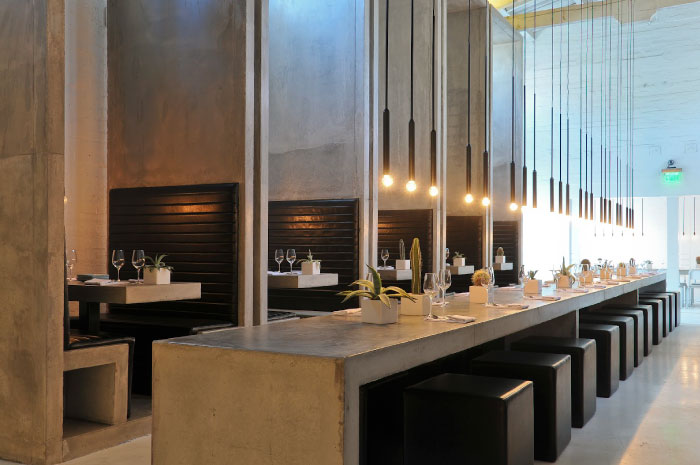Ad Designs feature pieces of furniture from well-known brands that you can buy on the spot. Rhythm and repetition is the idea of creating movement and harmony throughout your space with recurring patterns colors and different elements.

What Is Rhythm In Interior Design Learn To Apply Tilen Space
Successful rhythm in interior design keeps the viewer interested allowing viewers to take in every part of the design of a room.

. In an alternating design you use a 1-2-1-2-1-2 pattern. Like rhythm in music rhythm in design brings a sense of movement to a space. Gradation is the use of a change in size of objects from large to small or a change in color from light to dark.
Rhythm is also used to establish a continuity and flow within a room. Incorporating these mechanisms into your interior youll be able to create a sense of. Rhythm by gradation in interior design.
A space that has steady rhythm and repetition will lead the eye around the room seamlessly. Most importantly we create spaces that tell your story. The barajas airport by richard rogers and estudio lamela is an excellent example of rhythm achieved through repetition and progression of colour.
Dining Chairs Chandelier The Psychological Benefit of Rhythm. Serious interior designers should not stop until they feel the appropriate level of rhythm was achieved within a space. Repetition is a common means of creating rhythm and moving the eye through a space.
Rhythm is how well you execute repetition. Rhythm can also be achieved through progression. Rhythm created by a gradual change in size or color.
In interior design rhythm is all about repetition of design elements that help to create movement within a space. See more of radiation rhythm on facebook. In interior design rhythm is all about repetition of design elements that help to create movement within a space.
There are five flavors of rhythm. Progression 45 Interior design elements placed according to size from smaller to bigger ones or perhaps according to the gradient of their colours. Well start by defining rhythm within design.
Rhythm can be created using the same colours same materials same shapes or even by a progression of smaller to bigger furnishings as you move around the room. It carries the eye along a path at a pace that is comfortable for the viewer. An example of this being used in your home can be through accessories ranging from small to large or low to high.
The ultimate collection of rhythm in art including a rhythm in art definition. In interior design rhythm is all about repetition of design elements that help to create movement within a space. There are three methods of achieving rhythm in interior design.
Repetition Transition and Progression Also known as Gradation. See your exact room expertly designed in 3D custom to your specifications and revisions. Rhythm is the flow from one design element to the next assisting the eyes to move freely throughout an interior environment.
Traditionally there are three types of rhythm you can use in your interior design. The proper use of this principle will create excitement and interest within a space. Examples are a gradation of colour or a series of objects that start small and become large in a very regular manner.
Progression is a pattern developed through a sequence of colors or objects in recognizable way. Using these methods will create rhythm through continuity and interest. We create meaningful curated livable environments that are visually interesting and tell a story.
Rhythm via Progression Progressing through the room in terms of shapes sizes or colours is also one way to bring a rhythmic feel to the interior. It allows for unity and evolving variety in a design. What does rhythm by gradation mean in interior design.
Repetition is the repeated use of a particular design element or structure. Rhythm may be applied in bold statements that make an obvious suggestion about a path of travel or more subtly applied to move your eye about a space without you even realizing the rhythm is there. This is newest gallery of Transition Rhythm Interior Design design material.
The flow of elements usually organized according to a scheme such as repetition or alternation progression or graduation transition opposition or contrast or radiation. Shop a similar look. Today she will cover the final principal of interior design.
Rhythm can be created with patterns color structure size or texture. Weve always thought rhythm was the most confusing of all of the principles. Rhythm by gradation progression.
This can be seen in a set of nesting tables in the corner of a room or a three-piece animal sculpture that advances in size. There are three ways to create rhythm in interior design. In order to achieve rhythm in your own homes design youll have to think about repetition progression transition and contrast.
Nest Interiors is a boutique style interior design firm offering residential and commercial interior design services. Rhythm sets up those patterns leading the eye to the next point and the next and the next. We spend a lot of time talking about breaking interior design down into its distinct componentsfurniture textiles wall art etcbut in the end successful designs occur when each of those parts comes together to form a unified whole.
Rhythm by gradation or progression.

Interior Design Principles Rhythm Interior Design Principles Principles Of Design Interior Design

5 Ways Rhythm Engages Your Eye

Principles Of Interior Design Part 2 Rhythm

Principles Of Interior Design Part 2 Rhythm

How Does Rhythm In Design Engage Your Eyes Your Own Unique Decor

My Interior Design Course Part Ii The Principles Of Design Shiree Segerstrom

Pretty Color Combination Types Of Couches House Design Interior Design

Rhythm By Repetition 2 Achieved By Repeating Color Line Form Or Texture Interior Architecture Design Architecture Geometric Interior Design
0 comments
Post a Comment